Lawn mowers are widely used in various settings, including fields, lawns, and gardens, for cutting, trimming, or mowing the grass. They help ensure that the grass grows to the appropriate height and remains well-groomed. In addition, these useful machines help individuals save money and time when cutting the grass. Read this article to know why lawn mower pull cord not catching.

The pull cord is the most important and likely to fail assembly part of a lawn mower.
Like any other machine, lawn mowers are susceptible to breaking down occasionally. This is a very aggravating situation, and it is made even worse when it takes place during the active growth period of your lawn. For instance, a pull cord not catching is a common problem many lawn mower owners face from time to time. If the pull cord on your lawn mower is not catching, nothing will happen, and your lawn mower will not start.
This issue manifests itself more frequently in older lawn mowers that have been through a lot in their lives. However, the cause behind such a problem can often be easily identified and resolved. For instance, the most likely reason the mower’s pull cord won’t catch and start is a broken pulley system or worn pawls. In contrast, other probable causes include a broken recoil spring or a damaged pull cord.
Read this article to learn more. I will explain why the cord on your lawnmower won’t pull, and then I will provide a few possible solutions to the problem.
Lawn Mower Recoil Starter Assembly
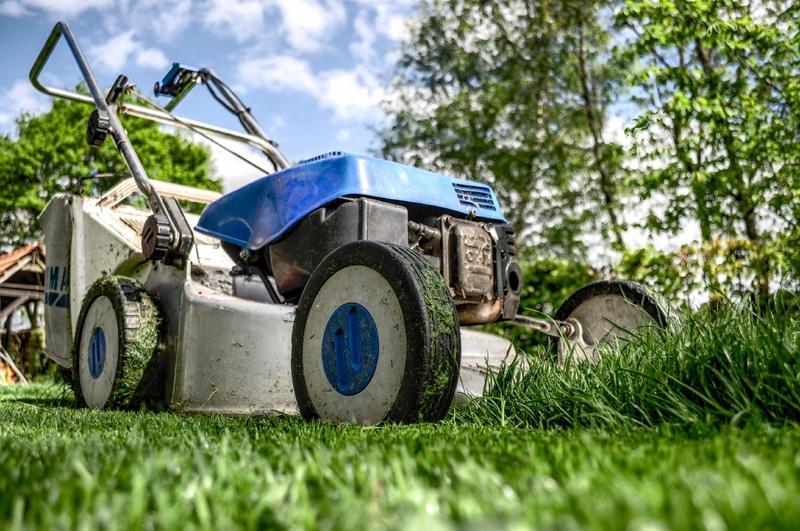
The recoil starter assembly on lawn mowers enables the operator to ignite the combustion.
If the pull cord on your lawn mower is not catching, you’ll need to learn the mechanism that controls it in order to figure out the issue and fix it easily. In either case, a full replacement starter assembly will normally cost about thirty dollars.
And the repair is a simple do-it-yourself job that takes only a few minutes to complete. So, let’s go ahead and learn about the different parts of a lawn mower starter assembly.
These components are crankshaft adapter, engaging pawls, flywheel pawl receiver, flywheel receiver, handle, paul spring, pull assembly housing, pull cord, pulley, and pulley cover, pulley recoil spring, and starter housing.
Also, remember that occasionally the problem can be easily fixed, such as when the handle or pull cord breaks. In this case, all that needs to be done is to replace the pull cord or the handle, which is a task that everyone can perform on their own.
However, there are several other issues as well that could be the problem. There is no need to worry, though. Each of these also has a solution that is not overly complicated.
RELATED: Help! My Lawn Mower Smokes White & Dies | Here Is How To Fix It Fast!
Can You Fix The Pull Cord Issue Yourself?
If you are handy and enjoy dealing with different mechanical components, it should not be too difficult or expensive for you to replace all or a portion of the pull cord on your lawn mower. However, in order to do this, you should be familiar with the make and model of your lawn mower. After that, you can conduct a search on the internet for the brand of your mower, the model number, and the recoilstarter assembly.
How Does The Pull Cord Work?
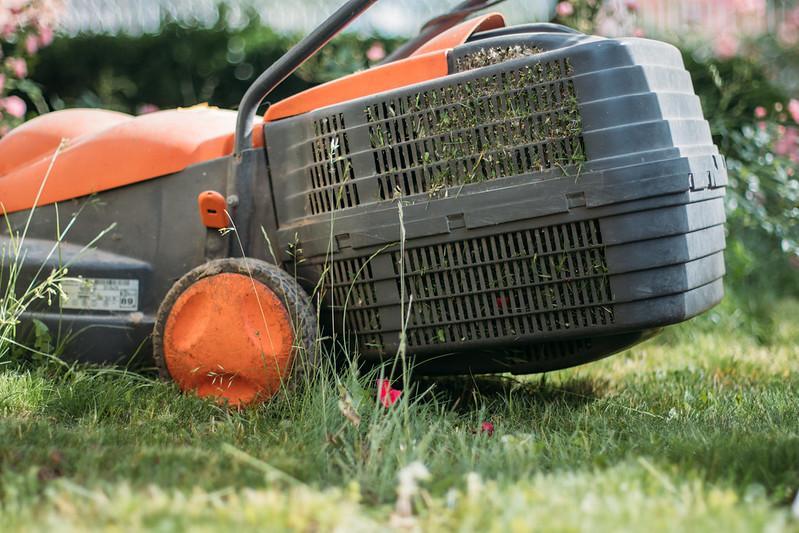
The recoil spring in a lawn mower allows you to pull the starter rope repeatedly.
The only component of the starting mechanism in a lawn mower that can be seen from the outside is the starter rope or pull cord. However, on the interior of your mower, the rope pulls a series of levers and pulleys to start the engine. When you tug the pull cord on your lawn mower to start the engine, the pull cord activates the start mechanism, which rotates the engine at speed sufficient enough to ignite the combustion module.
Starter Rope Pulls On The Pulley System
Inside, the pull cord is wound around the pulley system. This is what makes it possible to withdraw the starter rope before it can retract back into the mower. In walk-behind mowers, the pulley system is located underneath the lid that is present at the very top of the machine. Whereas the middle of the pulley has a recoil spring.
Pulley System Has A Recoil Spring
The recoil spring will extend as it is turned, and then it will snap back into place when the movement is stopped. This action immediately retracts the pull cord, enabling you to tug on the pull cord repeatedly in a short time.
Recoil System Operates The Flywheel
Next, the flywheel of the mower is powered by the recoil mechanism. The starter is located above the flywheel, which is situated in close proximity to the crankshaft. Here, magnets are attached to the exterior of the mower’s flywheel, where they produce magnetic energy when the wheel turns. Sparks of extremely high voltage will eventually be emitted from the magnets once they have accumulated sufficient power.
Pawls Catch The Spinning Flywheel
Like the flywheel, the pulley is also attached to the pawls of the lawn mower. Pawls are essentially wings of plastic that rotate as a result of gravitation forces, which assist in catching the flywheels and creating even faster spins.
Next, Crankshaft Moves The Piston
The crankshaft rotates in sync with the flywheel. When the mower’s crankshaft rotates, it assists the piston in moving back and forth, which pushes additional fuel and air mixture inside the combustion chamber of the lawn mower. In the event that this whole mechanism is unable to spin quickly enough, the engine will not start.
Things To Consider Before Repair
If your lawn mower does not have a significant problem, it is not recommended that you throw away your mower and immediately go out and get a replacement mower. Disassembling and reassembling the starter assembly on a lawn mower is easy and rather simple. Additionally, it is worth repairing, and the starter assembly of a walk-behind mower can be replaced by anyone, even those with no mechanical aptitude.
Having said that, I always recommend taking pictures of each stage so you can recall where everything went. However, if the thought of doing this work by yourself makes you feel anxious or overwhelmed, you have a few choices:
- You can Investigate the possibility that the warranty still applies to your mower.
- Make contact with a local shop that fixes tiny engines.
RELATED: Help! I Put Gas In The Oil Tank Of My Lawn Mower | How To Fix It Fast?
Possible Causes Of A Pull Cord Not Catching
Now that you have learned how the lawn mower pull cord works, you will be better able to understand the common failure points and how you can fix them.
So, let’s get started!
Damaged Or Broken Pull Cord
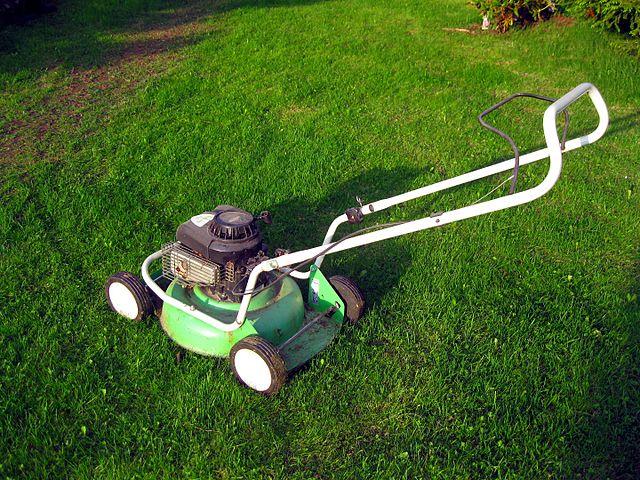
If the pull cord cable breaks, unwind the pulley spring before replacing it.
If the pull cord is frayed, damaged, or broken, the starter recoil will not spin, and as a result, neither will the crankshaft adaptor. The casing for the pull assembly will need to be removed to replace the pull cord. Here is how to do it:
- Take the starter housing off your mower.
- Cut the new line to match the old.
- To prevent the pulley from retracting, lock its spokes with a screwdriver.
- Disconnect the previous starter cord.
- Replacement rope should be fed through the pulley and knotted.
- Attach the pull handle to the string and double-knot it.
- Let the pulley retract after removing the screwdriver.
- Put the assembly back together in the starting housing.
Broken Pull Cord Handle
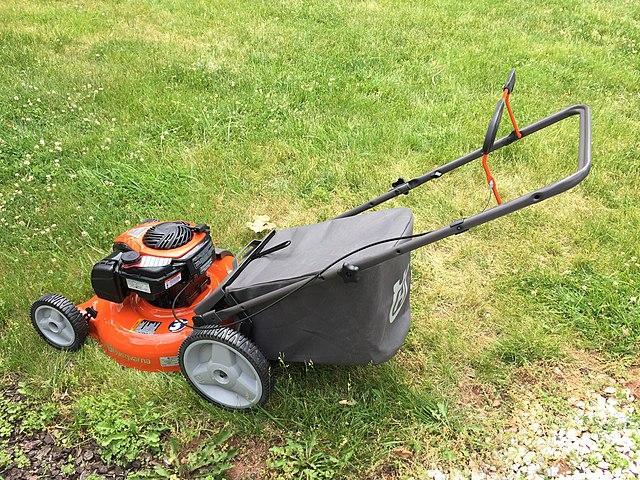
The pull cord handle is simple and easy to replace, like a pull cord.
Pull cord handles frequently break due to the handle’s potential to become dislodged during the starting procedure. The danger is that the cord might wind itself back up inside the mower at any moment. To deal with this issue, the housing for the pull starter will need to be removed so that the spring can be re-tensioned and the new handle can be installed.
Damaged Pulley System
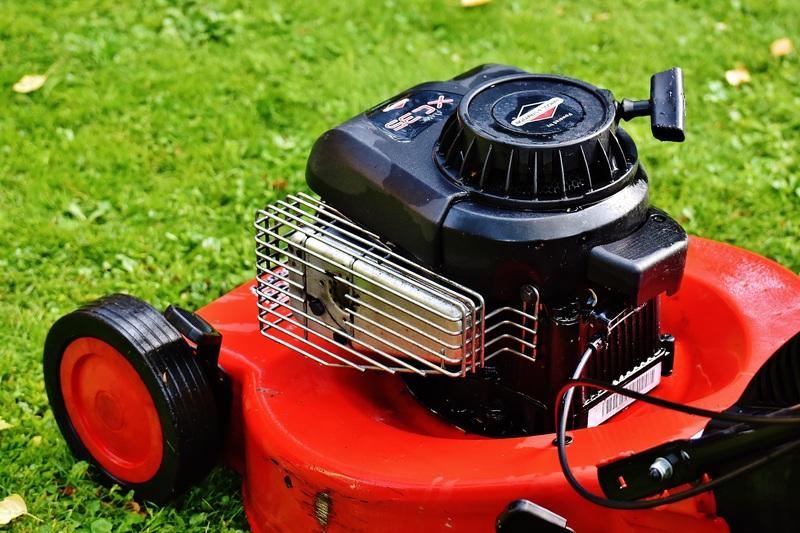
Replacement pulleys can be purchased with or without the recoil spring.
The recoil spring and the pull cord rope are both kept in the pulley attached to the mower. In addition to stashing it, the pull rope will be directed and fed by the pulley as it works. Unfortunately, pulleys are often made of plastic, which makes them susceptible to cracking.
Pulling a rope around a broken or fractured pulley will be difficult because of the resistance. In the event that the pulley fails to function properly or becomes jammed, the starter mechanism will not operate. Here is how to fix it:
- First of all, disconnect the spark plug.
- Take out the rope, secure the pulley, and recoil spring with a screwdriver.
- Next, free the screwdriver after removing the string to let the spring’s tension recover.
- To release the pulley, remove the center bolt and friction pulley.
- Now line the new pulley with the mower’s housing post.
- Tighten the recoil spring by rotating the pulley.
- Let go of the screwdriver, and the rope will coil up gradually.
- After that, reassemble the mower and try to turn on your mower.
RELATED: Starting A Lawn Mower That Has Been Sitting For Years | A Complete Guide
Broken Pulley Recoil Spring
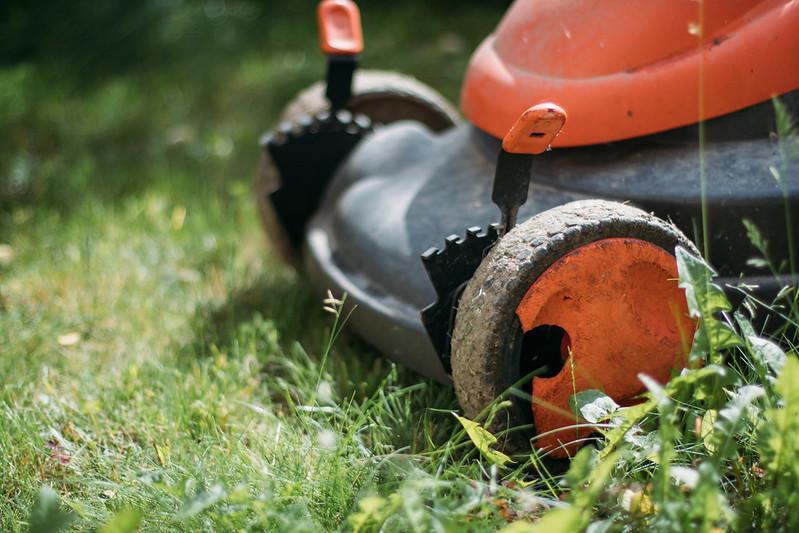
Typically, the spring is replaced with the pulley as it is difficult to work with alone.
Following a pull, the pulley recoil spring is what brings the rope back into its original position. The spring is located in the middle of the pulley and is secured to a socket that is located on the housing for the pulling assembly. Therefore, the pull assembly housing and the pulley will need to be removed before the spring can be changed.
Typically, the spring is replaced with the pulley. It is because working with the spring is quite challenging. Also, obtaining a full pulley assembly does not add much additional expense. So, purchasing and replacing the full assembly is usually the best action.
Damaged Pulley Pawls
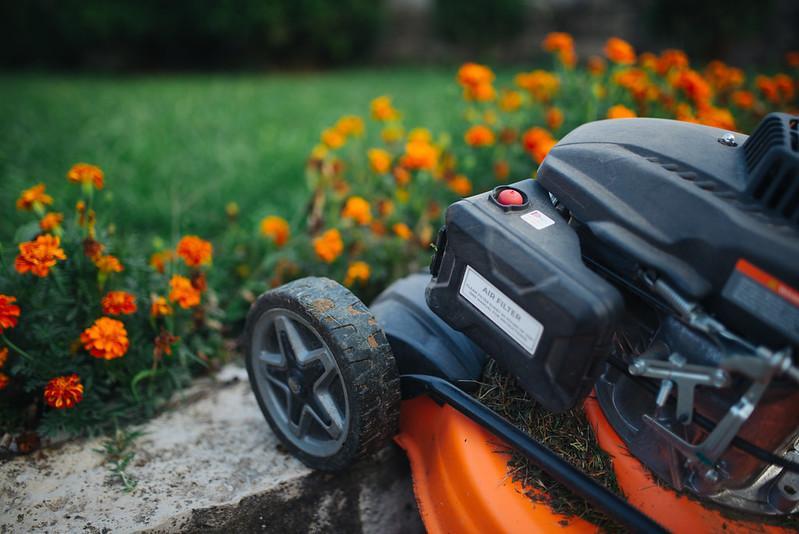
When pawls are damaged, you will feel that the starter rope is pulling too freely.
In most lawn mower models, the pawls are made of plastic; however, some also use metal. Pulling the starter cord causes a centrifugal force that causes them to fly outwards. Pawls are used to interact with the flywheel receiver, which is often a metal cup attached to the flywheel.
If the flywheel receiver is worn, the pawls won’t be able to engage, and the engine won’t start. So, also check the condition of the flywheel receiver. Here is how you can do it:
- Remove the spark plug.
- To see the assembly, remove the starter housing.
- To release the pawls, unscrew the central bolt and cap.
- Check the pawls for damage or overuse by removing them.
- If needed, replace with new pawls.
- Next, replace the lid and holding bolt.
- Replace the starter assembly and pull the cord to start your mower.
Other Issues Which Won’t Let The Pull Cord Catch
The problems with the pull cord system of a lawn mower are caused by a variety of factors, the most prevalent of which are described above; however, they are not the only ones.
Damaged Flywheel Receiver
The pawl receiver on the flywheel is a metal cup fastened to the flywheel. When the pulley pawls finally make contact with the receiver, the couple forms, and the engine begins to turn over. If they get damaged, the machine will not start. However, flywheel receivers usually do not cause much trouble in a lawn mower.
Broken Pulley Cover
Most pulley covers are fabricated from plastic, which means they are susceptible to cracking due to normal use. To replace something like this, you will need to take apart the housing for the pulling assembly, but not the pulley itself.
Final Thoughts
If your mower breaks down, it does not necessarily indicate that you will have to spend significant money fixing it. When you are familiar with the various components and how they operate, it is relatively easier to pinpoint where the issue is located. Worn or damaged pawls are the most common cause of a lawnmower pull cord not catching.
If your lawnmower is experiencing this issue, you can get to the bottom of the problem by following the instructions that have been outlined above. However, if you are unsure of your ability to work with mechanical components, it is always best to have a professional come in and look at the machine for you.
Frequently Asked Questions (FAQs)
Why is my lawn mower cord not pulling?
Your cord is not pulling because one of the flywheel starting assembly’s components has failed due to wear and tear from frequent use. Moreover, sometimes as the pull cord is being rewound, it will cross over itself. If this occurs, it may become difficult to pull.
How do you fix loose lawn mower string?
When the recoil spring on a lawn mower has lost its tension, the pull cord on the mower will become loose. To resolve this matter, you will need to take apart the pulling assembly and give it a few turns to tighten it. Alternatively, the spring could be replaced.
How do you reset the pull cord on a lawn mower?
In order to reset the spring on a lawn mower, it is typically necessary to disconnect the hub from the starter cover. To accomplish this, you will need to take the cord out. After that, thread the new line through the old one and secure it with a basic knot.
What causes a lawnmower engine to lock up?
It is possible for the piston to become frozen if you fail to replenish oil in the crankcase of your lawn mower. You might be able to liberate the piston of your lawn mower by removing the spark plug and then manually rocking the blade.
Can a seized lawn mower be fixed?
Most of the time, it’s very simple to dislodge a stuck lawn mower engine, but occasionally, you’re left with no choice except to repair the engine or replace it.
Sources For Further Reading
Lawn Mower Care and Safety – University of Florida Extension Service
The 10 Steps of Lawn Mower Maintenance – Alabama Cooperative Extension System
Lawn Mower Tune-up – UDaily, University of Delaware
Editor’s Recommendations
How To Revive St. Augustine Grass | Why Is My St. Augustine Dying
How To Make Bermuda Grass Thicker, Greener, and Fuller | A Beginners Guide
St. Augustine Grass Diseases And Problems | What’s Wrong With My St. Augustine?







